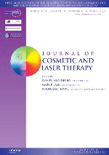
Journal of Cosmetic and Laser Therapy
Scope & Guideline
Advancing the Art and Science of Cosmetic Innovation
Introduction
Aims and Scopes
- Cosmetic Dermatology Innovations:
The journal covers novel techniques and treatments in cosmetic dermatology, including minimally invasive procedures, aesthetic enhancements, and skin rejuvenation therapies. - Laser Therapy Applications:
A significant focus is on the applications of laser technologies in dermatology, exploring their efficacy and safety for various conditions such as acne scars, hair removal, and vascular lesions. - Comparative Effectiveness Research:
The journal emphasizes systematic reviews and comparative studies that evaluate the effectiveness of different treatment modalities, providing clinicians with evidence to guide their practices. - Patient-Centered Approaches:
Research addressing patient preferences, satisfaction, and safety in cosmetic procedures is highlighted, reflecting a growing interest in patient-centered care in aesthetic medicine. - Emerging Technologies and Techniques:
The journal showcases cutting-edge technologies in dermatology, including photobiomodulation, microneedling, and advanced laser systems, contributing to the evolving landscape of cosmetic treatments.
Trending and Emerging
- Combination Therapies:
There is a notable increase in studies exploring the efficacy of combination therapies, integrating lasers with other modalities such as fillers and platelet-rich plasma, enhancing treatment outcomes for various skin conditions. - Personalized Treatment Approaches:
Emerging research emphasizes personalized treatment plans tailored to individual patient characteristics, including skin type and specific conditions, highlighting the importance of customization in cosmetic procedures. - Safety and Complications Management:
An increased focus on the safety profiles and management of complications associated with aesthetic procedures reflects growing clinician awareness of patient safety and risk mitigation. - Technological Advancements in Laser Devices:
Recent publications highlight innovations in laser technology, including picosecond lasers and dual-wavelength systems, showcasing their enhanced efficacy and versatility in treating diverse skin concerns. - Patient Preferences and Satisfaction Studies:
Growing interest in understanding patient preferences and satisfaction levels with cosmetic treatments signifies a shift towards patient-centered care, influencing how treatments are designed and delivered.
Declining or Waning
- Traditional Chemical Peels:
Research focusing on conventional chemical peels has decreased, likely as newer, less invasive alternatives such as laser treatments and microneedling gain popularity and demonstrate superior outcomes. - Basic Laser Treatments:
There seems to be a waning interest in basic laser treatments without additional innovative techniques or combinations, as the field moves towards more advanced and multifaceted approaches. - Non-Clinical Studies:
There is a decline in non-clinical studies or those lacking empirical evidence, as the journal increasingly prioritizes rigorous clinical research that directly informs practice. - Single Modality Treatments:
Publications centered on single modality treatments without consideration for combination therapies are becoming less frequent, reflecting a trend towards integrated treatment strategies that optimize patient outcomes. - General Skin Conditions:
Research on generic skin conditions without a cosmetic application or laser intervention is declining, as the journal focuses more on aesthetic treatments and their innovations.
Similar Journals

Turkderm-Turkish Archives of Dermatology and Venerology
Empowering Dermatology with Unrestricted KnowledgeTurkderm - Turkish Archives of Dermatology and Venerology, published by GALENOS PUBL HOUSE, serves as a vital platform for the dissemination of innovative research and advancements in the fields of dermatology and venerology. With an Open Access policy implemented since 2002, this journal aims to provide free and unrestricted access to significant findings, ensuring that vital information reaches a global audience. Based in Turkey, the journal has positioned itself as an important resource for professionals, researchers, and students alike, despite currently being categorized in Q4 of both Dermatology and Infectious Diseases as per the 2023 metrics. Although it faces competition in the rankings, with a Scopus standing of #131 in Dermatology and #331 in Infectious Diseases, its dedication to advancing knowledge in these critical health areas is unwavering. The journal continually invites original research, reviews, and case studies that enhance clinical practices and foster understanding in the dermatological community.

SKIN RESEARCH AND TECHNOLOGY
Unveiling the Latest Advances in Skin Health Research.SKIN RESEARCH AND TECHNOLOGY, a distinguished publication by Wiley, stands at the forefront of dermatological science, emphasizing innovative research and technological advances in skin health. With an ISSN of 0909-752X and an E-ISSN of 1600-0846, this journal serves as a vital platform for researchers and professionals to present their findings and engage in discussions surrounding skin biology, clinical practices, and therapeutic technologies. As evidenced by its respectable Q2 ranking in the dermatology category for 2023 and a Q3 status in miscellaneous medicine, the journal attracts a broad readership and contributes significantly to the field. Housed in the United Kingdom with publications spanning from 1995 to 2024, SKIN RESEARCH AND TECHNOLOGY continues to foster innovation and knowledge dissemination in skin-related research. While its Access options are not open, the impact of the journal remains prominent, appealing to academic professionals and students eager to explore emerging trends and advancements in dermatological studies.
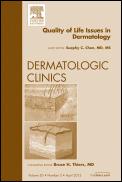
DERMATOLOGIC CLINICS
Leading the Way in Dermatology: Where Research Meets PracticeDERMATOLOGIC CLINICS is a leading journal in the field of dermatology, published by W B SAUNDERS CO-ELSEVIER INC. Since its inception in 1983, the journal has consistently provided a platform for the dissemination of high-quality research and clinical insights, earning its place in the prestigious Q1 quartile for dermatology in 2023. With a Scopus ranking of #34 out of 142 in its category and a commendable 76th percentile, DERMATOLOGIC CLINICS remains essential reading for clinicians, researchers, and students alike. The journal features comprehensive reviews and original articles that address the latest advancements and challenges in dermatologic diagnostics and treatments. Though it does not offer Open Access, it is widely accessible ensuring a broad readership. With a commitment to advancing the understanding of skin disorders, DERMATOLOGIC CLINICS continues to uphold its legacy of excellence in dermatological scholarship.

AESTHETIC PLASTIC SURGERY
Exploring the Art and Science of Aesthetic SurgeryAesthetic Plastic Surgery, published by Springer, is a premier journal dedicated to advancing the field of cosmetic and reconstructive surgery. Since its inception in 1976, the journal has established itself as a vital resource for surgeons, researchers, and medical professionals, achieving a remarkable H-Index and ranking in the top percentile for surgery disciplines within Scopus. With an impressive impact factor and categorized in the Q1 quartile for Surgery, this journal is committed to publishing high-quality articles that encompass a wide array of topics within aesthetic procedures, innovative techniques, and patient outcomes. Although it does not offer open access, the journal remains pivotal for those seeking to stay updated with the latest research, trends, and practice modalities in aesthetic surgical care. With a global reach, catering to scholars from the United States and beyond, Aesthetic Plastic Surgery is an invaluable asset for anyone immersed in the transformative realm of plastic surgery.
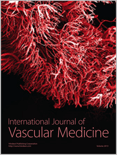
International Journal of Vascular Medicine
Elevating Standards in Cardiovascular ResearchThe International Journal of Vascular Medicine is a peer-reviewed, open access journal dedicated to advancing research and knowledge in the field of vascular medicine. Published by HINDAWI LTD and operating since 2010, this journal provides a platform for the dissemination of high-quality studies, reviews, and case reports related to cardiovascular health. Based in Egypt, the journal's comprehensive scope encompasses a range of topics within cardiology and cardiovascular medicine, with a current impact factor reflected by its Q3 ranking in 2023, positioning it among the noteworthy publications in its category. With a Scopus rank of 176 out of 387, the journal maintains a significant presence in the academic community, supported by a commitment to open access, ensuring that research is freely available to all stakeholders. Researchers, professionals, and students alike are encouraged to contribute to and engage with the International Journal of Vascular Medicine as it enhances the understanding and treatment of vascular diseases and promotes innovative practices within the field.
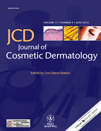
Journal of Cosmetic Dermatology
Advancing the Art and Science of Skin HealthJournal of Cosmetic Dermatology, published by WILEY, stands as an influential platform in the field of dermatology, specifically focusing on cosmetic interventions and skin health. With its ISSN 1473-2130 and E-ISSN 1473-2165, this journal caters to a global audience, offering high-quality research and reviews that bridge the gap between scientific innovation and clinical practice. Ranked in the 74th percentile within the dermatology field, the journal occupies a notable position at Q2 in category rankings, reflecting its commitment to excellence and relevance in the cosmetic dermatology landscape. The journal encourages submissions that advance the knowledge of skin conditions, designs of cosmetic treatments, and patient care strategies, providing both researchers and practicing dermatologists with the insights needed to enhance clinical outcomes. Despite being a subscription-based platform, readers can engage deeply with a wealth of scholarly articles from 2002 through the present, which underscores its longstanding contribution to dermatological science.
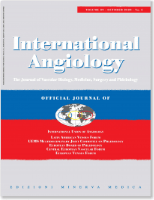
INTERNATIONAL ANGIOLOGY
Illuminating the Path to Cardiovascular ExcellenceINTERNATIONAL ANGIOLOGY is a leading journal in the field of Cardiology and Cardiovascular Medicine, published by EDIZIONI MINERVA MEDICA. Since its inception in 1984, it has become an essential resource for researchers, clinicians, and students interested in the latest advancements and research in vascular health. With an ISSN of 0392-9590 and an E-ISSN of 1827-1839, the journal maintains a strong academic presence, reflected by its category quartile ranking of Q3 in 2023, positioning it among the noteworthy publications within the cardiology sector, as indicated by its Scopus rank of #209 out of 387. Although the journal is not open access, it provides a critical platform for disseminating knowledge on topics ranging from angiogenesis to interventional vascular procedures. As the journal continues to evolve towards its convergence in 2024, it remains committed to fostering academic discourse and delivering high-quality research that shapes the future of cardiovascular medicine.
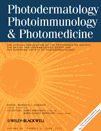
PHOTODERMATOLOGY PHOTOIMMUNOLOGY & PHOTOMEDICINE
Pioneering Research in Photodermatology and BeyondPHOTODERMATOLOGY PHOTOIMMUNOLOGY & PHOTOMEDICINE, published by WILEY, is a leading academic journal dedicated to the interdisciplinary study of skin-related health issues, particularly focusing on the impacts of ultraviolet light as well as the immunological and therapeutic aspects of photomedicine. With a rich publication history dating back to 1990 and a commitment to advancing knowledge in its field, this journal serves as a vital resource for researchers and professionals working in dermatology, immunology, and related disciplines. Recognized for its high impact, it has achieved a Q1 classification in Dermatology and holds robust rankings in several other categories, reflecting its strong contribution to scholarly discourse. Although it does not currently operate as an Open Access publication, PHOTODERMATOLOGY PHOTOIMMUNOLOGY & PHOTOMEDICINE remains crucial for disseminating essential findings and innovations, particularly for those involved in studies exploring the intersections of skin health, immune response, and therapeutic technologies.
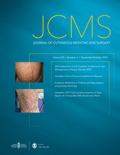
JOURNAL OF CUTANEOUS MEDICINE AND SURGERY
Elevating standards in skin care and surgical techniques.The Journal of Cutaneous Medicine and Surgery is a premier publication in the fields of dermatology and surgery, dedicated to advancing the scientific understanding of skin-related conditions and surgical techniques. Published by SAGE Publications Inc, this esteemed journal features a rich repository of peer-reviewed research, reviews, and clinical studies, ensuring that it remains at the forefront of dermatologic and surgical innovation. With an impressive impact factor and a ranking in the top quartile (Q1) of both dermatology and surgery categories for 2023, it is recognized as a vital resource for professionals, researchers, and students alike. The journal has consistently made significant contributions to the knowledge base that guides clinical practice and surgical decision-making, fostering a deeper understanding of the complexities involved in cutaneous medicine. For comprehensive updates, researchers can access this journal through SAGE’s platform, which supports the dissemination of high-quality research findings to a global audience.
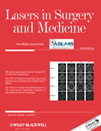
LASERS IN SURGERY AND MEDICINE
Leading the way in laser advancements for modern medicine.LASERS IN SURGERY AND MEDICINE, published by Wiley, is a premier peer-reviewed journal dedicated to advancing the field of laser technology in surgical and medical applications. With an impactful contribution to research since its inception in 1980, this journal has maintained a strong presence in high-impact categories, achieving Q1 status in both Dermatology and Surgery as of 2023. The journal is highly regarded, ranking #69 out of 551 in Medicine—Surgery and #21 out of 142 in Medicine—Dermatology within Scopus, indicating its significant influence in shaping contemporary surgical practices. Although it does not currently offer open access, subscribers and institutions can access a wealth of knowledge through its rigorous publication standards and high-quality research articles. Perfect for researchers, professionals, and students, LASERS IN SURGERY AND MEDICINE is an essential resource for those looking to stay at the forefront of innovations in laser applications across various medical fields.